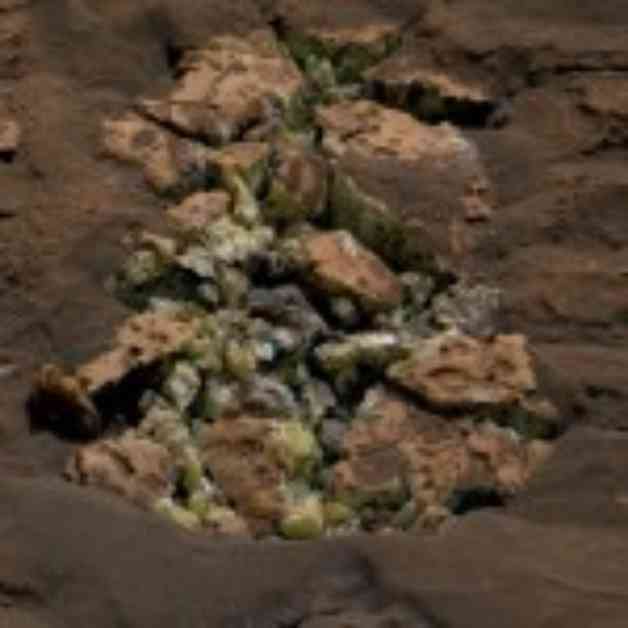NASA’s Curiosity Mars rover has made a groundbreaking discovery on the Red Planet, finding rocks made of pure sulfur for the first time ever. This surprising finding has left scientists stunned and eager to learn more about this unique geological feature.
Since October 2023, Curiosity has been exploring a region of Mars abundant with sulfates, a type of salt containing sulfur that forms as water evaporates. Previous detections of sulfur on Mars have been in the form of sulfur-based minerals, which are a combination of sulfur and other materials. However, the recently cracked open rock revealed elemental sulfur, which is pure sulfur in its natural form. The abundance of elemental sulfur in this area raises questions about its origin and its relationship to other sulfur-based minerals nearby.
Contrary to popular belief associating sulfur with the foul smell of rotten eggs, elemental sulfur is actually odorless. It only forms under specific conditions that scientists have not previously linked to the history of this Martian location. Curiosity stumbled upon a field of bright rocks resembling the one it crushed, hinting at the possibility of more sulfur discoveries in the area.
The rover has been exploring Gediz Vallis channel, a groove along the 3-mile-tall Mount Sharp on Mars. Each layer of this mountain represents a different era in Martian history, and Curiosity’s mission is to investigate the past conditions that could have supported microbial life on the planet. Gediz Vallis channel, visible from space before Curiosity’s launch, is believed to have been shaped by ancient flows of liquid water and debris.
Scientists have been studying the geological features of the channel to understand how the landscape evolved billions of years ago. Recent findings suggest that both ancient floodwaters and landslides contributed to the formation of large mounds of debris along the channel. The presence of angular rocks in some mounds indicates dry avalanches as a possible depositional process, while water-induced chemical reactions have bleached white halo shapes into certain rocks.
The evidence of past water activity on Mars continues to challenge scientists’ initial assumptions, revealing a more complex history of the planet. Curiosity’s recent drilling operation at Mammoth Lakes, a large rock near the channel, aimed to extract samples for detailed analysis. While the sulfur rocks were too fragile to be sampled, the rover successfully collected powderized rock from Mammoth Lakes for further examination.
Curiosity’s exploration of Gediz Vallis channel is ongoing, with scientists eager to uncover more surprises hidden within this Martian landscape. The rover’s discoveries contribute valuable insights to our understanding of Mars’ geological history and potential for ancient life forms. NASA’s Jet Propulsion Laboratory in California leads this mission on behalf of NASA’s Science Mission Directorate, continuing to push the boundaries of planetary exploration.












